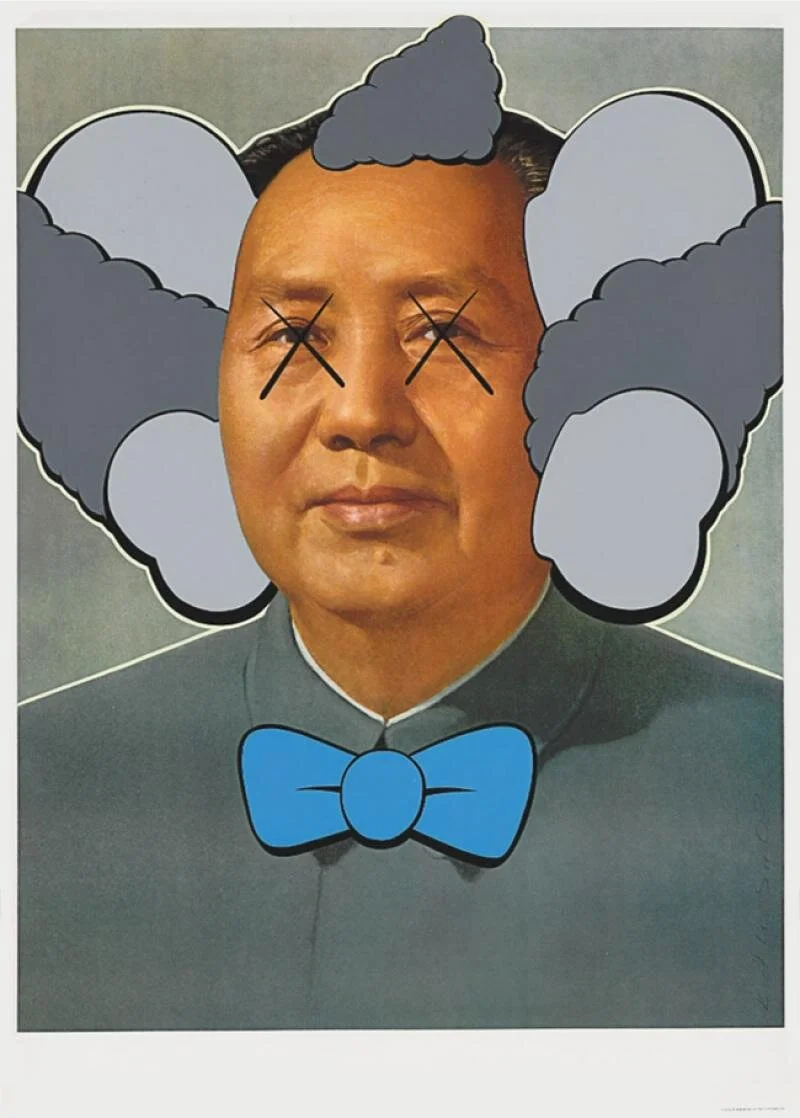Even though Donnelly is highly regarded all over the world, especially by fashion enthusiasts, he has recently found himself in the midst of a cultural disrespect argument from the population of China, in regards to of his work of art that depicts the president and dictator Mao Zedong. The 2002 soon-to-be-auctioned art piece titled “UNTITLED”, depicts the Chinese president as never seen before, with crossed-out eyes, big clown-like ears and hair and a goofy bow tie, in very typical KAWS fashion.
As a consequence, the admiration towards KAWS has taken a 180-degree turn, due to the controversy that the painting caused, as many saw this as a humiliating move towards China and its people - especially because of the fact that its auction at Sotheby’s Hong Kong was scheduled to be notably close to the 70th-anniversary celebrations of the Chinese Communist Party, founded by Mao. In response to the backlash and heavy criticism, Uniqlo China, with which Kaws had collaborared, has reportedly taken out all KAWS products from its stores, and so has China’s biggest resale shop, Poizon. Additionally, the artwork was taken down from Sotheby’s website and several fans have posted videos on their social media accounts showing their KAWS items — such as his toys and clothing collaborations — on flames.
Even though the criticism that Donnelly faced this year is massive and has caught the eye of multiple art magazines, it’s important to note that this is not the first time that an artist and/or a brand, has faced backlash by the Chinese market.
Back in late 2018, the famous Italian brand Dolce and Gabbana found itself in a very similar situation. Three advertising videos, which were deleted from the company's Weibo account, showed a young Chinese woman using chopsticks to eat pizza and other Italian food. Many Chinese social media users described the videos as racist and plagued with stereotypes. As the situation unfolded and things got more intense, after the intervention of Diet Prada, the brand’s Shanghai show got canceled, dozens of stores were shut down all over China and several Chinese consumers decided to burn their D&G items as a sign of their rage and disappointment.
Thus, as media becomes more and more diverse and audiences are able to raise their voice, one might wonder: Who has the right to tell the stories? Can an artist create a piece based on a culture different from their own? Or should artists only stick to the boundaries of their own race, ethnicity and culture?

